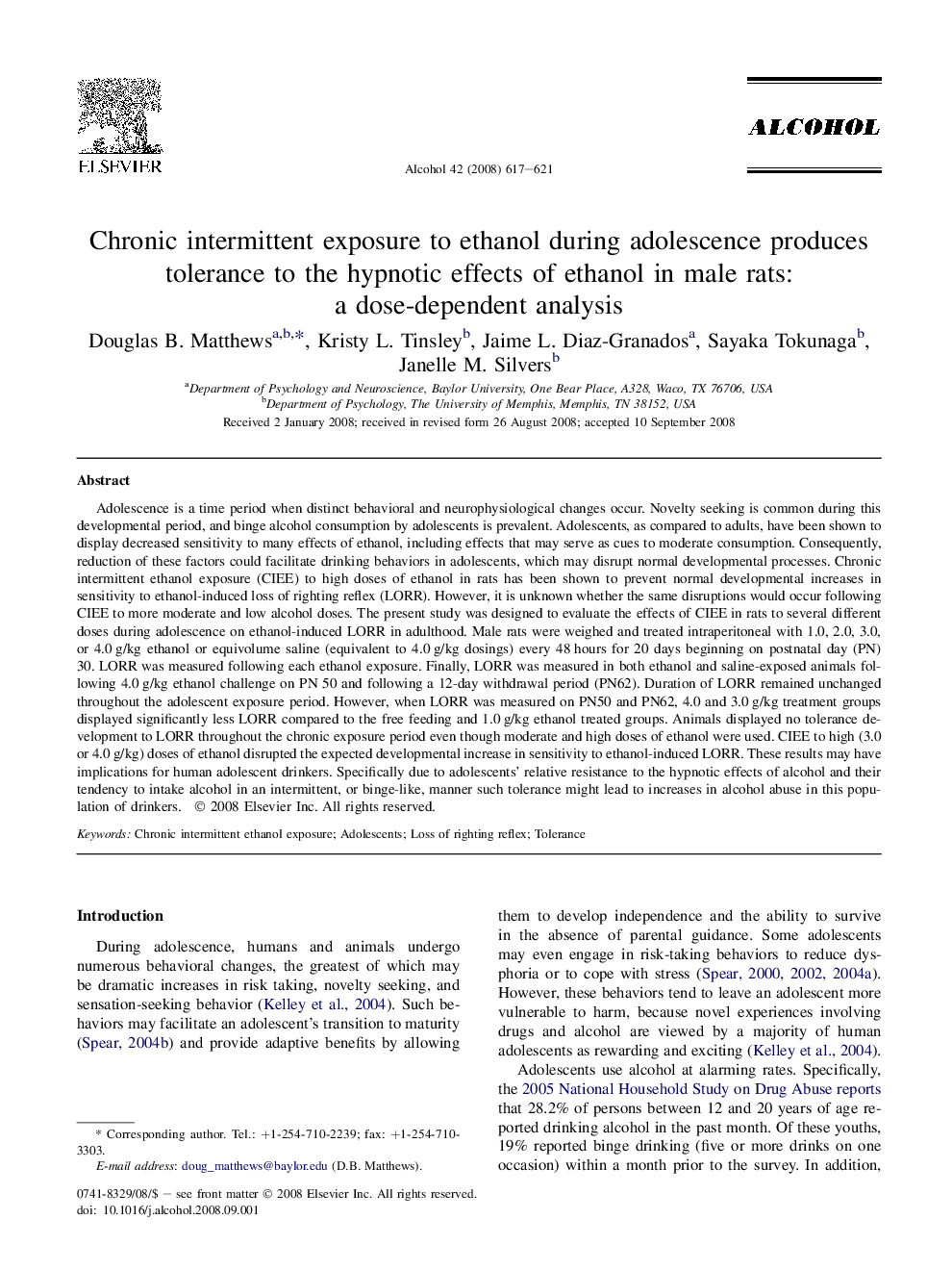| کد مقاله | کد نشریه | سال انتشار | مقاله انگلیسی | نسخه تمام متن |
|---|---|---|---|---|
| 1067866 | 948940 | 2008 | 5 صفحه PDF | دانلود رایگان |

Adolescence is a time period when distinct behavioral and neurophysiological changes occur. Novelty seeking is common during this developmental period, and binge alcohol consumption by adolescents is prevalent. Adolescents, as compared to adults, have been shown to display decreased sensitivity to many effects of ethanol, including effects that may serve as cues to moderate consumption. Consequently, reduction of these factors could facilitate drinking behaviors in adolescents, which may disrupt normal developmental processes. Chronic intermittent ethanol exposure (CIEE) to high doses of ethanol in rats has been shown to prevent normal developmental increases in sensitivity to ethanol-induced loss of righting reflex (LORR). However, it is unknown whether the same disruptions would occur following CIEE to more moderate and low alcohol doses. The present study was designed to evaluate the effects of CIEE in rats to several different doses during adolescence on ethanol-induced LORR in adulthood. Male rats were weighed and treated intraperitoneal with 1.0, 2.0, 3.0, or 4.0 g/kg ethanol or equivolume saline (equivalent to 4.0 g/kg dosings) every 48 hours for 20 days beginning on postnatal day (PN) 30. LORR was measured following each ethanol exposure. Finally, LORR was measured in both ethanol and saline-exposed animals following 4.0 g/kg ethanol challenge on PN 50 and following a 12-day withdrawal period (PN62). Duration of LORR remained unchanged throughout the adolescent exposure period. However, when LORR was measured on PN50 and PN62, 4.0 and 3.0 g/kg treatment groups displayed significantly less LORR compared to the free feeding and 1.0 g/kg ethanol treated groups. Animals displayed no tolerance development to LORR throughout the chronic exposure period even though moderate and high doses of ethanol were used. CIEE to high (3.0 or 4.0 g/kg) doses of ethanol disrupted the expected developmental increase in sensitivity to ethanol-induced LORR. These results may have implications for human adolescent drinkers. Specifically due to adolescents' relative resistance to the hypnotic effects of alcohol and their tendency to intake alcohol in an intermittent, or binge-like, manner such tolerance might lead to increases in alcohol abuse in this population of drinkers.
Journal: Alcohol - Volume 42, Issue 8, December 2008, Pages 617–621